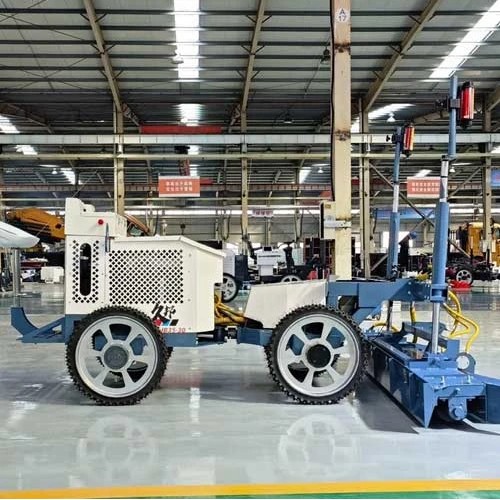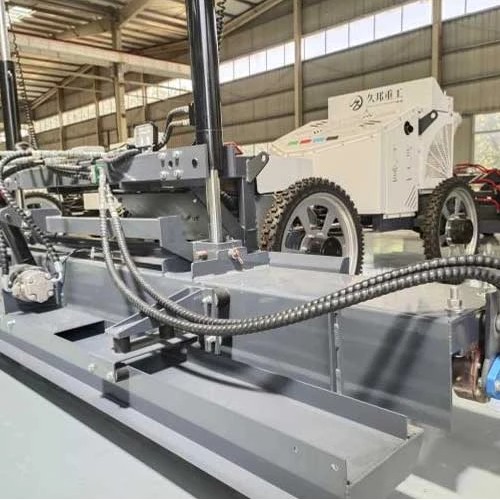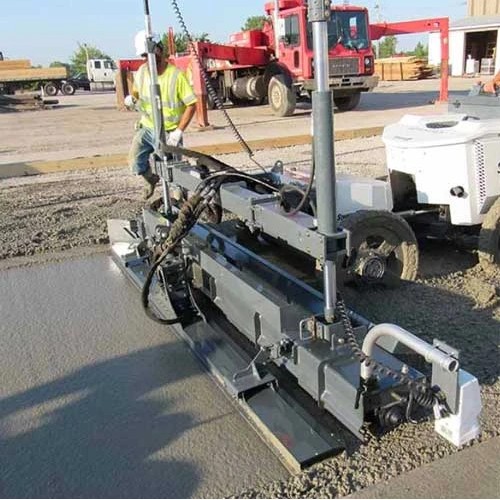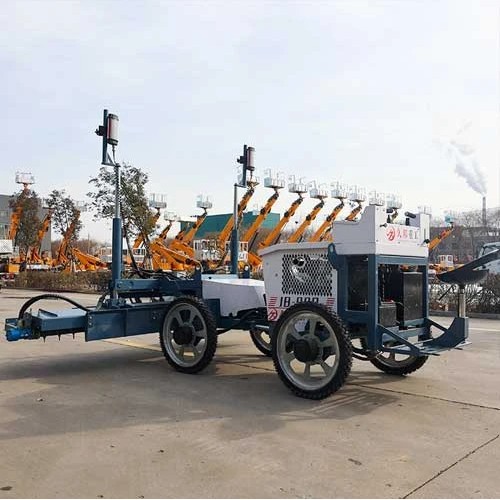NEWS
Introduction

In the world of flooring installation, achieving a perfectly level and smooth surface is crucial. One of the most efficient tools for ensuring such precision is a laser guided screed. This advanced technology has revolutionized the way flooring is done, especially for large-scale construction projects. With its ability to deliver consistent results, the laser guided screed has become an essential piece of equipment in the construction industry. In this blog, we will explore how a laser guided screed works, its advantages, and why it's indispensable for any flooring project.
What is a Laser Guided Screed?
A laser guided screed is a high-tech tool used for leveling concrete floors with exceptional precision. The screed uses laser beams to guide the leveling process, ensuring that the surface is consistently flat. Unlike traditional methods, the laser-guided system allows for automated adjustments that result in faster, more accurate outcomes. It is commonly used in the construction of industrial floors, warehouses, and large commercial spaces.
How Does a Laser Guided Screed Work?

At its core, a laser guided screed operates by using a laser transmitter placed at a fixed point on the floor. The laser receiver attached to the screed is used to read the height and level of the concrete. The system automatically adjusts the screed’s position based on the laser readings, ensuring that the concrete is laid at a consistent thickness and level. This results in flawless flooring with minimal manual intervention.
Benefits of Using a Laser Guided Screed
Using a laser guided screed offers numerous benefits, making it an invaluable tool for contractors and construction teams. Some of the key benefits include:
- Precision and Accuracy: The laser guidance ensures the concrete is leveled to perfection, reducing the chance of uneven surfaces.
- Increased Speed: The automation speeds up the process of screeding, allowing large areas to be completed much faster than with traditional methods.
- Consistency: The technology ensures that each pass of the screed results in the same smooth finish, eliminating human error.
- Reduced Labor Costs: Since the laser guided screed requires less manual labor, it can reduce the overall cost of the project.
- Quality Finish: The result is a flawless floor with minimal imperfections, which is especially important for high-traffic areas.
Types of Laser Guided Screeds
There are several types of laser guided screeds, each designed for different project needs. Some of the most common types include:
- Walk-behind Laser Guided Screeds: Ideal for smaller projects and areas that are harder to reach.
- Ride-on Laser Guided Screeds: These are larger, more powerful machines used for big commercial or industrial flooring projects. They allow operators to ride on the machine, which helps reduce fatigue and increase efficiency.
Each type is tailored to specific project sizes, and selecting the right one can make a significant difference in the outcome of the project.
Applications of Laser Guided Screeds in Construction
The laser guided screed is highly versatile and can be used in a variety of flooring applications, including:
- Warehouse Flooring: Large warehouses require highly level floors to ensure the safe movement of goods and equipment. A laser-guided screed ensures uniformity across vast spaces.
- Commercial Buildings: Large commercial spaces like shopping malls and office buildings benefit from the precision and efficiency of this technology.
- Industrial Floors: In industrial settings, where heavy machinery and equipment are in constant use, a flawless floor surface is crucial to prevent damage and ensure operational efficiency.
The Role of Laser Guided Screeds in Improving Project Efficiency

By incorporating a laser guided screed, construction teams can significantly improve project efficiency. The automation of the leveling process means less time spent manually adjusting the screed, leading to faster project completion. Additionally, the consistency of the results reduces the need for rework, ensuring that the project stays on schedule and within budget.
Table: Key Features of a Laser Guided Screed
How to Choose the Right Laser Guided Screed for Your Project
When selecting a laser guided screed, it's important to consider several factors to ensure you choose the right one for your specific project needs. Consider the size of the area you are working on, the type of concrete, and the level of precision required. For smaller projects, a walk-behind screed may be sufficient, while larger projects may require a ride-on model for efficiency and comfort.
Common Issues and Troubleshooting Tips

While laser guided screeds are highly reliable, like any piece of machinery, they can sometimes encounter issues. Common problems include:
- Misalignment: If the laser transmitter is not properly aligned, the screed may not level the floor correctly.
- Battery Life: Extended use can deplete the battery, so it's important to monitor and recharge the system regularly.
- Surface Obstructions: Large debris or uneven sub-surfaces can interfere with the screed’s effectiveness.
Regular maintenance and calibration can help prevent these issues and keep the screed running at optimal performance.
Conclusion
The laser guided screed is an invaluable tool that ensures precise, high-quality flooring results. Its ability to automate the screeding process and provide consistent, accurate leveling makes it a must-have for modern construction projects. Whether you’re working on large-scale industrial flooring or smaller commercial spaces, this technology will improve efficiency, reduce costs, and guarantee a flawless finish.
If you’re ready to elevate your flooring projects with a laser guided screed, contact us today to find out more and get started on your next project.
FAQ
What is the difference between a walk-behind and a ride-on laser guided screed?
A walk-behind laser guided screed is typically used for smaller projects and allows the operator to walk behind the machine, while a ride-on model is designed for larger areas and allows the operator to ride on the screed for added comfort and efficiency.
Can a laser guided screed be used on uneven surfaces?
Yes, the laser guided screed can work on slightly uneven surfaces, but the smoother the base surface, the better the results. It's always recommended to prepare the sub-surface properly before use.
How do I maintain a laser guided screed?
Regular maintenance includes cleaning the machine after use, checking the alignment of the laser transmitter, and ensuring the battery is charged. It’s also important to calibrate the system periodically to ensure accurate performance.
Search
Categories List
Need More Details?
Contact me for details on creating and managing design projects, project features, and services and prices
Write us a few words about your project and we’ll prepare a proposal for you within 24 Hours
